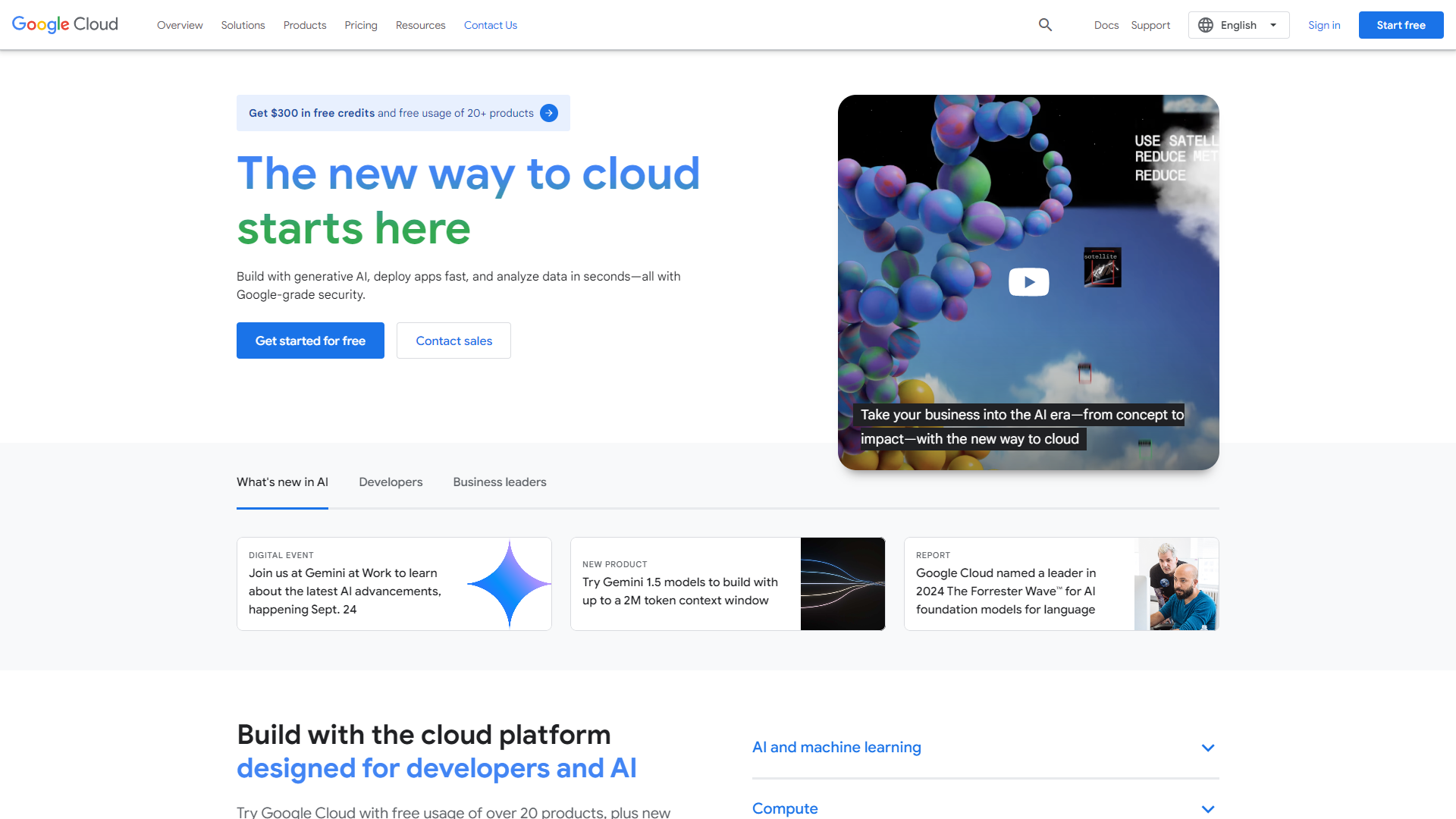Overview
Google Cloud Vision API is a leading solution that allows developers to use machine learning for understanding images. It helps in identifying objects, texts, and activities in photos. This technology is user-friendly and can integrate seamlessly into various applications.
The main aim of the Google Cloud Vision API is to transform how we interact with images. By utilizing advanced algorithms, it offers accurate image recognition services, making it easier for businesses to automate tasks like image classification and content moderation.
Through its versatile features, this API can be applied in numerous fields, from retail to healthcare. It empowers organizations to extract important insights from visual content, enhancing decision-making processes and improving overall operational efficiency.
Pricing
| Plan | Price | Description |
|---|---|---|
| Free Trial | Free Trial (Per Month) | Charges are incurred per image. For files with multiple pages, such as PDF files, each page is treated as an individual image. Each feature applied to an image is a billable unit. |
| Standard Pricing | Pay As You Go (Per Month) | Charges are incurred per image. For files with multiple pages, such as PDF files, each page is treated as an individual image. Each feature applied to an image is a billable unit. The more units are evaluated using features below the less you pay per unit within a month. |
Key features
Label Detection
Automatically identifies and tags objects within images, allowing for easy categorization.
Text Detection
Extracts printed and handwritten text from images, enabling the digitization of documents.
Face Detection
Recognizes faces in images and can detect attributes like emotions and head rotation.
Landmark Detection
Identifies popular landmarks within photos, helping in location-based services.
Logo Detection
Recognizes brand logos in images, useful for marketing analysis and monitoring.
Image Properties
Analyzes image properties such as color depth, brightness, and sharpness, helping in image optimization.
Safe Search Detection
Flags inappropriate content in images, making it beneficial for content moderation.
Object Localization
Detects and locates multiple objects within images, offering detailed insights.
Pros
- Ease of UseThe API is user-friendly, with clear documentation to help developers integrate it smoothly.
- High AccuracyUtilizes advanced machine learning models for highly accurate image recognition.
- ScalabilitySuitable for small projects and large enterprises, it can handle varying amounts of image data.
- IntegrationEasily integrates with other Google Cloud services, enhancing functionality.
- Cost-EffectiveOffers a pay-as-you-go pricing model, making it budget-friendly for businesses.
Cons
- Limited Free TierThe free usage is limited, which may not cover all small project needs.
- Internet DependencyRequires a stable internet connection for API calls, potentially slowing down processes.
- Privacy ConcernsSome users may have concerns about data privacy and how images are stored.
- Complexity in CustomizationAdvanced features may require deeper understanding of machine learning.
- Response TimeIn some cases, API calls can take longer than expected during high traffic.
FAQ
Here are some frequently asked questions about Google Cloud Vision API.
It is a tool by Google that allows users to analyze and understand images using machine learning.
You can get started by creating a Google Cloud account and setting up a project to enable the API.
Yes, Google offers a free tier, but it has limitations on the number of requests.
It can analyze various types of images, including photos, scanned documents, and more.
Yes, the API can detect faces and identify certain attributes such as emotions.
Yes, it is designed to integrate easily with various applications and services.
You can use several programming languages, including Python, Java, and JavaScript.
The API is powered by Google’s advanced machine learning models that are continuously improved.

